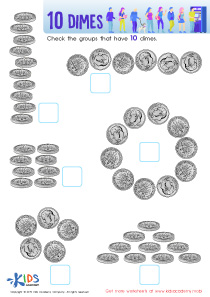Easy Mazes worksheets activities for 3-Year-Olds
2 filtered results
-
From - To


Rainy Day Maze Worksheet
Easy Mazes worksheets activities are a fantastic tool for children of all ages, offering a plethora of benefits that extend far beyond simple entertainment. These engaging puzzles not only captivate the young minds but also serve as an instrumental educational resource. Let's delve into why these activities are so beneficial.
First and foremost, Easy Mazes worksheets activities are an excellent way to enhance problem-solving skills. As children navigate through the twists and turns of a maze, they must think ahead and strategize their next moves. This process of trial and error fosters critical thinking and decision-making abilities, skills that are invaluable both in the classroom and in everyday life.
Moreover, these activities are great for improving hand-eye coordination and fine motor skills. Maneuvering through a maze requires control and precision, encouraging children to develop a steady hand. This is particularly beneficial for young learners, helping them with writing and other activities that require manual dexterity.
Easy Mazes worksheets activities also promote patience and perseverance. Completing a maze, especially one that poses a challenge, requires persistence. Children learn the importance of staying focused and not giving up, even when faced with difficulties. This resilience is a key quality that will help them tackle challenges throughout their lives.
In addition to these cognitive and physical benefits, Easy Mazes worksheets activities are accessible and inclusive. They cater to a wide range of skill levels, ensuring that every child can participate and enjoy the sense of achievement that comes with solving a puzzle. This inclusivity makes them a perfect tool for classrooms and homes alike, promoting a fun and educational environment for all children.
In summary, Easy Mazes worksheets activities are more than just a way to pass the time. They are a multifaceted educational tool that supports cognitive development, enhances fine motor skills, and instills valuable life lessons in patience and perseverance. Incorporating these activities into a child's learning routine can significantly contribute to their growth and development.

 Assign to the classroom
Assign to the classroom










